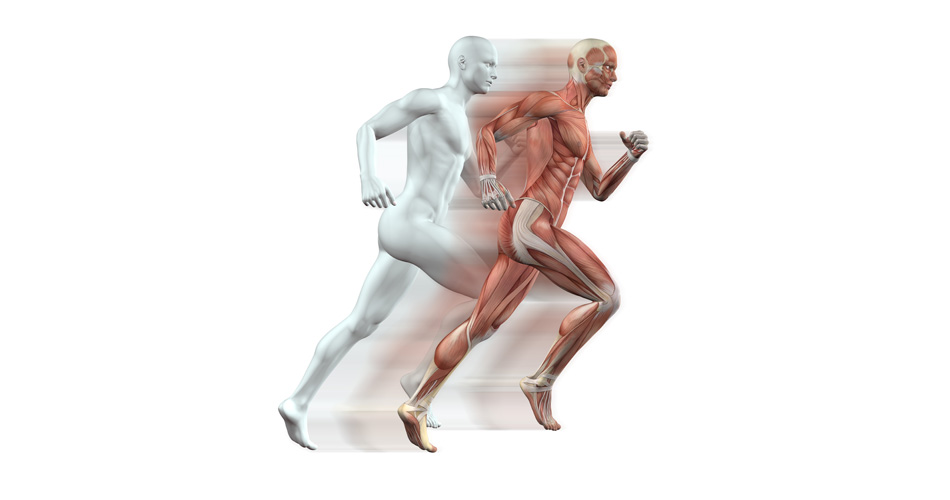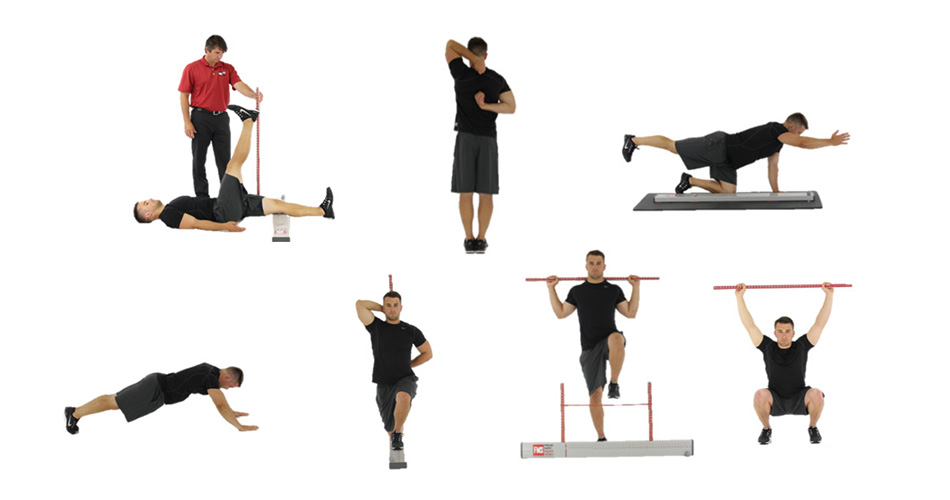Joint-By-Joint Approach and Warm-Up
The following ‘article’ was made during the June, 2010 while doing internship at Mike Boyle Strength and Conditioning (MBSC) in Woburn, MA. We had a homework of doing review of Joint-by-Joint and Warm-up DVDs by Mike Boyle. I shared short review of both approaches and some of mine opinions/critiques/concerns. Enjoy!

Joints have needs. They are differently built, and they have different function in complex human body and its movements. It could be said that over time movement evolutionary shaped our joints to fit our movement needs. Since the human movement is interplay between stability~mobility[1], different joints contribute to this continuum between these complementary conceptual pairs in different degrees.
Since every joint has possible 6-degrees of freedom, 3 of which are rotational (or physiological) and 3 of which are translational (or accessory), it can be said that each of these degrees for each individual joint has a point in stability-mobility continuum space. This is a movement classification system for different joints and they differ at different degrees of freedom by their structure (cause structure dictates function, yet function over time shaped structure as evolutionary process). Thus, it is hard to put individual joint at one group (either stability or mobility), but rather their individual degrees of freedom for a given movement task.
According to constraint-led approach to motor control, human movement is an emergent process that happens under the constraints. In this example, joints can be considered constraints, along with their individual 6 degrees of freedom and their corresponding stability~mobility space-point. Thus, in some way joint constraints shape the movement (along with other constraints).
Mark Comerford basically identified one complementary pair in his writings: give~restriction. Basically, since joints and tissues constraint movement patterns, a problem in one joint (or in one or more of his 6-degrees of movement) or musculo-fascial tissue may cause (although it is hard to specify causation, since it is usually circular causation that is happening) a problem at different place. In simple words, a restriction at one area may cause non-physiological „give“ at same place (different movement plane or different degree of freedom) or at more distance place(s). The „give“ is where pain is, and is usually cause by restriction at a different plane (joint or musculo-skeletal tissue).
Physical therapists identified couple of give~restriction issues in human body, and this is the concept that Mike Boyle refers to as joint-by-joint approach. Since some joints (at some specific degrees of freedom or movement planes) are more prone to develop „restrictions“, they need more „mobility work“, while other joints are more prone to „give“ and develop pain, so they need more „stability work“ or at least less mobility work. Mike Boyle, based on this concept identified a given structure:
- Ankle joint needs more mobility
- Knee joint needs more stability
- Hip joint needs more mobility
- Lumbar spine need more stability
- Thoracic spine needs more mobility
- Scapulo-thoracic joint need more stability
- Gleno-humeral joint need more mobility
Although I would answer „it depends“ to this classification (main reason is that we should talk about different degrees of movement at each joint under specific movement context) it is pretty simple and understandable to provide practice guidelines for the trainers and coaches. But we must remember there is more to it.
One aspect that Mike talks about is the difference between flexibility and mobility. According to Mike, flexibility is a property of muscles, while mobility is a property of a joint. I may be wrong, but my opinion is that is just linguistic issue. Flexibility is a specific motor quality that is task dependent, and basically can be classified to active, passive, static, dynamic, etc. Anyway, there are different limiting factors (or if you want constraints) to the specific expression of flexibility. Sometimes, it is a muscle issue, sometimes it is a ligament/joint issue, sometimes it is just a pain threshold issues (usually this is what limits passive static flexibility). Thus, in this example Mike Boyle refers to different constraints that limits the flexibility in a given joint and his different planes.
In his warm-up approach, Mike Boyle tries to address different needs of the joints, according to joint-by-joint concept, along with following this concept in strength training design (a nice joint-by-joint approach that includes different degrees of freedom for upper body is presented in Eric Cressey’s Shoulder Savers series and Building and Efficient Athlete DVDs). Basically, the structure is following:
- Foam roll to address „restrictions“ in musculo-fascial tissues
- Isometric stretch, that utilize 3D stretching concept to further address common „restrictions“ in musculo-fascial tissues
- Activation work, to „wake up“ given muscle groups (usually glutes, hip rotators and scapulae stabilizers) that are in a „give mode“
- Dynamic mobility to further activate and warm-up the body (and to decrease any negative effects of static stretching), imprint some appropriate movement patterns and provide a progressive transition to main workout
The choosing of the means (exercises) within each group depends on the joint-by-joint concept and the difference between linear and lateral training days.
Some of my thoughts on this approach are the following:
- There should be more stretching of the upper-body, like traps, pecs
- There should be more upper body activation/warm-up like push-ups, different kind of arm swings
- The warm-up is somehow generic.
I would love to further elaborate on the last point. Even if there are more commonalities in athlete needs or universality (we learn the physiology of humans, not different athletes) as defined by joint-by-joint, some athletes need more individualized approach. This is the complementary pair: universality~individuality. My point here is that although the warm-up should be the „same“ (universal) for all athletes, some individuality must be provided. Some athletes need more upper body warm-up, some are more „robust“ and don’t need as much warm-up, some need more time to warm up their problematic areas. It is true that young athletes need to learn good warming-up principles and procedure, but more experienced athletes have their own „routines“ and at least we should provide couple of short time periods where athletes are able to do some of their own warm-up, like 1-2min periods at the end of every part of the warm-up where athletes after they finish with universal exercises, can address some of their individual needs (for example do more rolling for upper body, or stretch the quads more because they feel sore, do more upper body dynamic exercises cause they feel sore/stiff, etc). My point here is that there should be universality, but there should also be individuality. If we want to teach athletes how to fish, we must give them options to choose, but guide them to good choosing. I know it is hard to do it due time-constraints and facility design and logistic (staggered groups), but this is just my opinion and I am providing it for further elaboration.
Another points is that this warm-up is geared toward context we have at MBSC facility. Since I work with soccer players on the outside, I must address that we need to adapt the warm-up for that kind of context, especially if we warm-up in the mud and under the rain. This is why understanding concepts and principles rather than memorizing routines is more important: it is going to give us solutions under different contexts.
In summary, joint-by-joint approach is worth studying but we must remember that there is more to it, along with its implementation to MBSC warm-up which is generic routine constructed with specific context in mind which is MBSC facility and logistics.
EDIT:
Just for the example, here is the warm-up we did for a boxing practice (beginners) on April, 2010 in Zrenjanin, Serbia, with coach Milan Piperski.
Warm up structure:
General Part
1. Joint circles and easy short stretches
2. Dynamic warm-up and some BW exercises
Specific Part
3. Specific boxing drills (some technique work and footwork by Kenny Weldon)
4. Shadow boxing (not seen on the video)
Around 20min total.
Please note that this in NOT how we warm-up every time or THE warm-up we do, and not the warm-up you should or must do. Again, this is just an example, and it is one training session taken out of context. Most of the American readers will find this just plain weird or maybe unnecessary and long, especially the ‘joint circles’ part, but please note that this is how we warm-up from elementary school. And I agree on the point that it look like “gey mating ritual”. But if you think more about it, aren’t all warm-ups and training protocols started from the rituals? Religious, war, etc?
[1] Squiggle sign ~ represents a complementary pair. See Complementary Nature website for more info











Responses